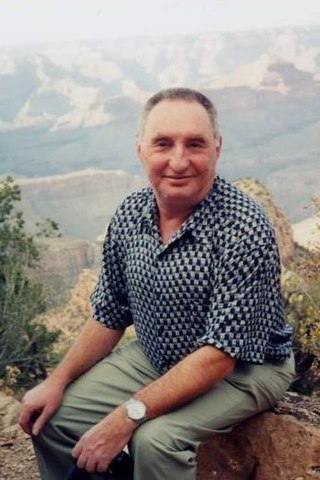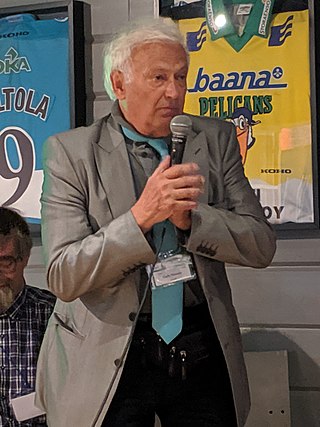
Esperanto is the world's most widely spoken constructed international auxiliary language. Created by the Warsaw-based ophthalmologist L. L. Zamenhof in 1887, it is intended to be a universal second language for international communication, or "the international language". Zamenhof first described the language in Dr. Esperanto's International Language, which he published under the pseudonym Doktoro Esperanto. Early adopters of the language liked the name Esperanto and soon used it to describe his language. The word esperanto translates into English as "one who hopes".

Reinhard Justus Reginald Selten was a German economist, who won the 1994 Nobel Memorial Prize in Economic Sciences. He is also well known for his work in bounded rationality and can be considered one of the founding fathers of experimental economics.

The City of San Marino, also known simply as San Marino and locally as Città, is the capital city of the Republic of San Marino and one of its nine castelli. It has a population of 4,061. It is on the western slopes of San Marino's highest point, Monte Titano.

Humphrey R. Tonkin is professor of English, and served as the 4th president of the University of Hartford. He is also a dedicated Esperantist.

Helmar Gunter Frank was a German mathematician and pedagogist. He was among the first scientists to apply mathematical methods in teaching and psychology. He established a method to measure intelligence on an absolute and homogeneous scale rather than by comparison between individuals.
William Edward Collinson was a British linguist and, from 1914 to 1954, Chair of German at the University of Liverpool. Like Edward Sapir and Otto Jespersen, he collaborated with Alice Vanderbilt Morris to develop the research program of the International Auxiliary Language Association (IALA). From 1936 to 1939, he was Research Director of IALA. Under Collinson's guidance, methods of compiling international word material were tested at Liverpool. In 1939 IALA moved from Liverpool to New York and E. Clark Stillman succeeded Collinson as Research Director. Alexander Gode, editor of the first English-Interlingua dictionary published in 1951, remained in contact with Collinson which had collected much of linguistic material in the University of Liverpool.

Boris Grigorevich Kolker is a language teacher, translator and advocate of the international language Esperanto. He was until 1993 a Soviet and Russian citizen and since then has been a resident and citizen of the United States residing in Cleveland, Ohio. In 1985 he was awarded a Ph.D. in linguistics from the Institute of Linguistics of the Academy of Sciences of the USSR in Moscow.
Ralph Arnold Lewin was an Anglo-American biologist, known as "the father of green algae genetics". He was born in London and later moved to America. He also was known as a poetry author.

Vinko Ošlak is a Slovene author, essayist, translator, columnist and esperantist from the Austrian state of Carinthia.

Carlo Minnaja is a retired professor of Mathematics, a native Esperanto speaker, and Esperanto translator, author and researcher. He authored many books about Esperanto, in Esperanto and Italian, including a vocabulary of Esperanto, and is a member of the Akademio de Esperanto.
Hans Michael Maitzen is an Austrian astronomer.

Wim De Smet was a Flemish zoologist, specialized in marine mammals, and an esperantist. He published a lot of scientific and popularizing articles in Dutch, English, French and Esperanto. He projected an entirely new system for the naming and classification of animals and plants.
Claus Killing-Günkel, in Esperanto also known as Nikolao Günkel, is a German teacher and interlinguist.

Grégoire Maertens is a Belgian Esperantist who was a member of the Estraro for the UEA from 1977 until 1992. From 1980 until 1986, he was president of the UEA, and an honorary member from 1993 onwards.

The following outline is provided as an overview of and topical guide to Esperanto:
There are two conventional sets ASCII substitutions for the letters in the Esperanto alphabet that have diacritics, as well as a number of graphic work-arounds.

Ilona Koutny is a Hungarian linguist and Esperantist. She works as a professor in Poznań, Poland. In 2008, she was honoured as "Esperantist of the Year" by the magazine La Ondo de Esperanto.










